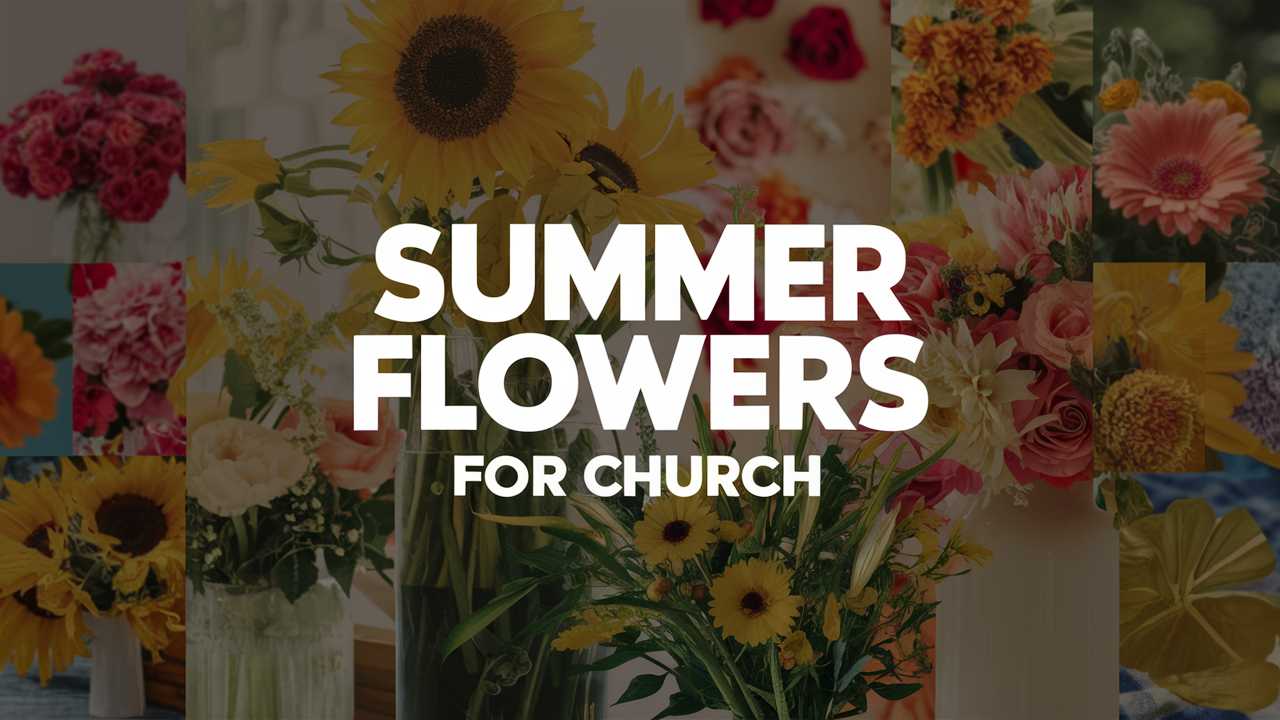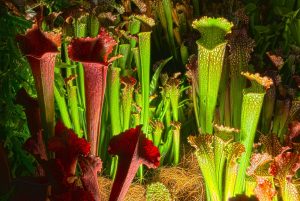Summer is a captivating season, marked by lush greenery and blooms that seem to burst with life and color. This season provides an opportunity for churches to create warm, inviting atmospheres through floral arrangements that not only beautify the space but also resonate with the themes of worship, community, and reflection.
Let’s dig deeper into the significance and diverse applications of each of the chosen summer flowers, enhancing the spiritual and aesthetic essence of church life.
Lavender
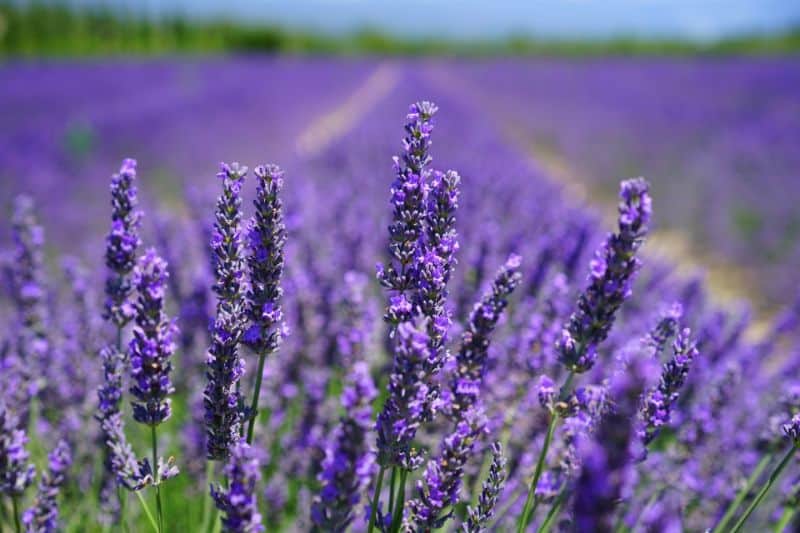
Lavender is a quintessential summer flower known for its calming fragrance and delicate purple color. Often associated with purity and devotion, lavender’s soothing properties can be particularly impactful in a church setting. From spiritual retreats to peaceful prayer corners, lavender can help create an environment conducive to meditation and reflection. Its ability to evoke tranquility makes it a wonderful choice for arrangements during contemplative services.
In addition to traditional bouquets, consider incorporating lavender into wreaths for doorways or even crafting sachets that can be placed throughout the church. Dried lavender can also be used in craft activities for children or youth groups, linking the beauty of nature with lessons of faith and community involvement.
Sunflower
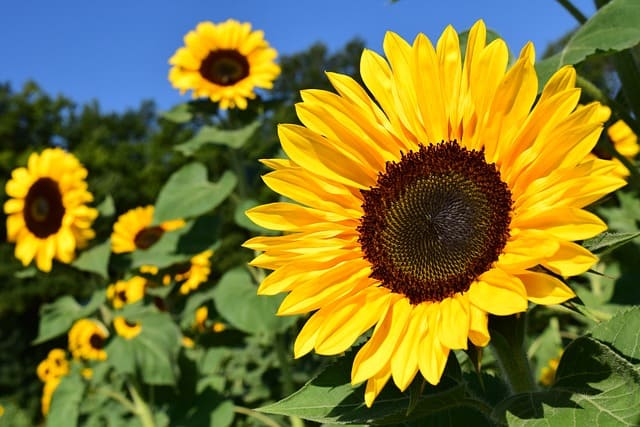
Nothing brightens up a church hall like a bouquet of sunflowers. Symbolizing adoration and loyalty, sunflowers reflect the steadfastness of faith embodied within a community. Their bold yellow petals radiate joy, mirroring the warmth and enthusiasm of summer. Sunflowers can be used in vibrant arrangements for celebrations, such as summer picnics, outdoor services, or youth events, reinforcing themes of community, love, and fellowship.
For added diversity, consider pairing sunflowers with other flowers of varied heights and colors in arrangements that can easily be moved from the altar to fellowship hall tables. This practicality allows for creative flow throughout the church as events unfold during the summer season.
Peony
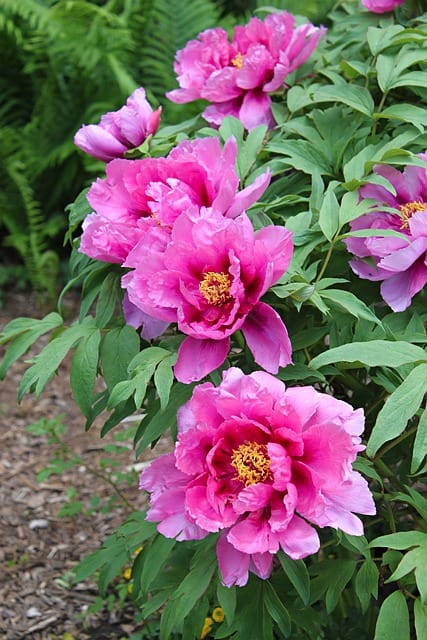
Peonies bring an abundance of lush beauty and sweetness to any floral arrangement. Known for their large, fragrant blooms, peonies symbolize prosperity, good fortune, and romantic love, making them especially popular for weddings, vow renewals, or special church anniversaries. Their seasonal nature means they are best showcased during the early summer months.
When used in arrangements, peonies can convey a sense of abundance and grace, making them perfect for altar displays or as part of centerpieces during community feasts. To emphasize their beauty, consider mixing peonies with lighter flowers like daisies or wildflowers, creating a harmonious blend that embodies both elegance and approachability.
Zinnia
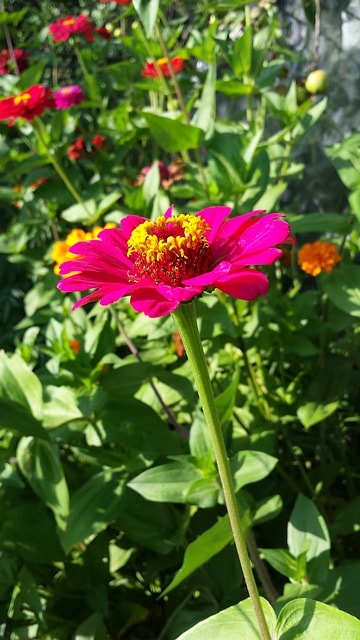
Zinnias are colorful, hardy flowers that symbolize joy and lasting friendship. Their spectrum of vibrant colors, including fiery reds, yellows, and pinks, makes them an ideal choice for decorative arrangements in various church events. They thrive in summer heat, which aligns perfectly with the sunny disposition of church gatherings like barbecues, family reunions, and outdoor services.
These flowers can easily be grown by congregants as part of a church garden initiative. Encouraging members, especially youth, to cultivate zinnias fosters a sense of ownership and connection to the church’s physical environment. Celebrating the growth of these flowers with community events can strengthen relationships within the congregation.
Geranium
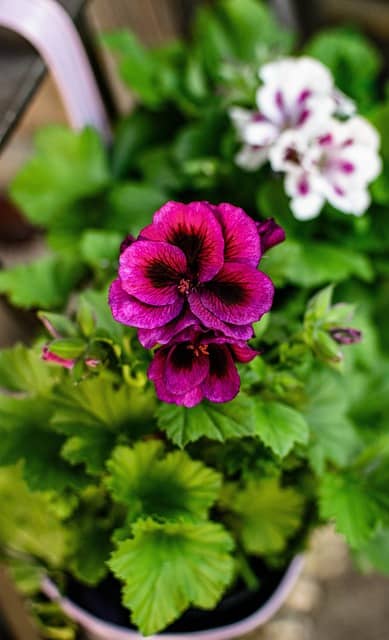
Geraniums are versatile and resilient flowers known to signify comfort and healing, making them particularly fitting for church settings focused on pastoral care and community support. Their vibrant hues can enhance the church’s aesthetic, whether used in window boxes, hanging baskets, or as part of indoor floral arrangements.
Geraniums are also historically connected to many cultures’ religious practices, symbolizing divine favor. Using geraniums in floral arrangements during services that center on healing and support can reinforce the message delivered from the pulpit. Their hardiness means they can thrive in various conditions, making them low maintenance yet impactful additions to summer decorations.
Delphinium
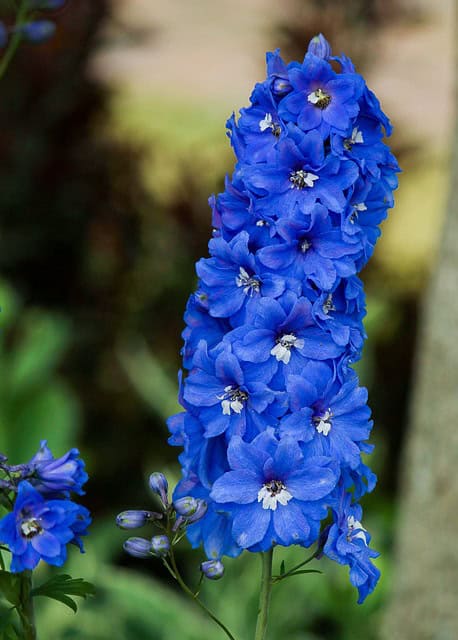
Delphiniums are tall and graceful flowers that can introduce an elegant vertical element to floral arrangements. With shades ranging from deep blues to lighter lavenders, they symbolize love and honesty—values that resonate deeply within a church community. Delphiniums can create stunning focal points at the altar or during church events, drawing the eyes of congregants and instilling a sense of reverence.
Incorporating delphiniums into arrangements for baptismal or confirmation services can reinforce the themes of commitment and honesty in faith. Their striking presence can also elevate the visual impact of community celebrations, serving as a reminder of the beauty found in shared worship and fellowship.
Lily
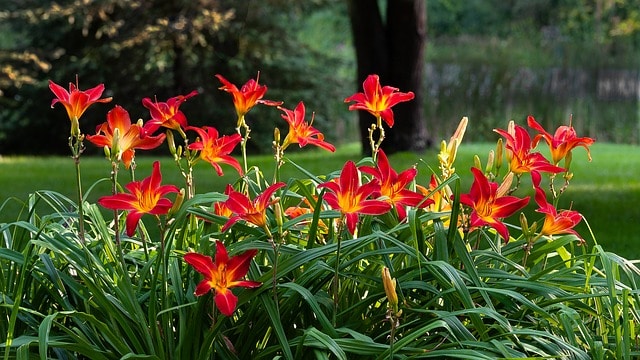
Lily blooms, particularly the vibrant summer varieties, convey themes of purity, resurrection, and renewal. Their incredible beauty makes them a classic choice for church decor, especially during significant events such as Easter, weddings, and memorial services. The fragrance of lilies can permeate the church hall, enhancing worship experiences with their heavenly scent, drawing congregants into a deeper spiritual connection.
Lily arrangements can be elevated by pairing them with green foliage or seasonal flowers for a more organic look that balances the natural beauty of the church environment. Dedicating a special arrangement of lilies to honor the memory of loved ones can also serve as a poignant reminder of the cycle of life, a common theme in church teachings.
Marigold
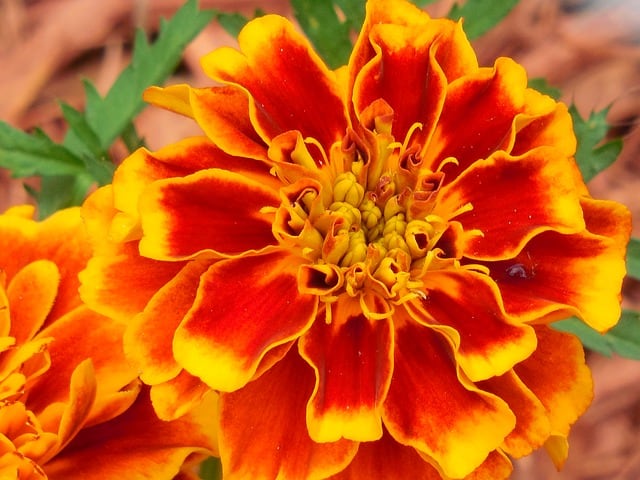
Marigolds, with their sunny disposition, exude warmth and creativity, making them a joyful choice for church settings. Their bright orange and yellow blooms can symbolize warmth and positivity in the community, embodying the spirit of welcome and connection among congregants.
Marigolds are also associated with many cultural festivities, often used in decorations during harvest celebrations. Using marigolds in the church’s summer floral displays can tie in beautifully with community fundraisers or outreach events aimed at gathering resources for local missions. Their hardiness allows them to thrive throughout the summer, ensuring that the church remains bright and inviting.
Cosmos
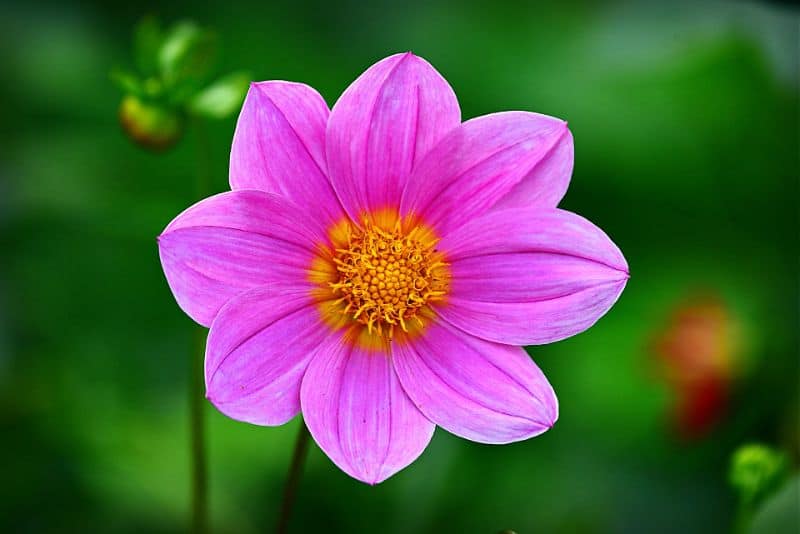
Cosmos flowers are graceful and ethereal, often representing harmony and tranquility. Their light, feathery petals can bring a sense of lightness to any floral arrangement. They are especially suitable for services focused on peace, forgiveness, or reconciliation, resonating with the core messages many churches strive to convey.
In arrangements, cosmos can be combined with more robust flowers to create dynamic contrasts, symbolizing the strength of the church community and the gentle spirit of its teachings. Utilizing cosmos in outdoor arrangements during church picnics or fellowship gatherings can enhance the connection to nature that many congregants cherish.
Hydrangea
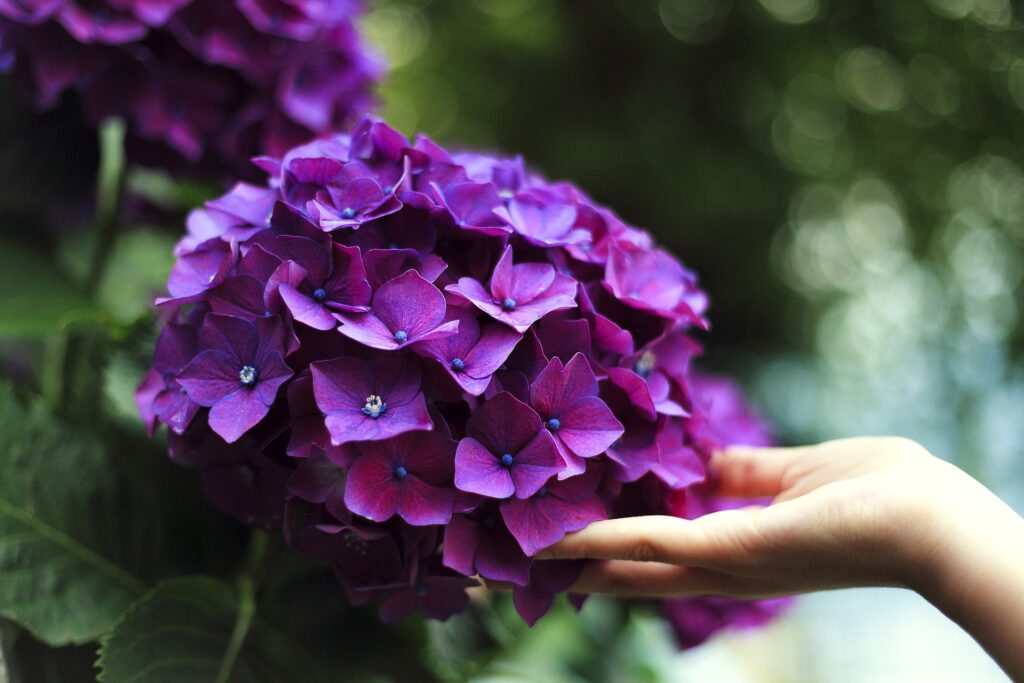
Hydrangeas, with their voluminous blooms and color variations, represent gratitude and understanding, themes central to church gatherings. The flower’s ability to change colors based on soil conditions can be an analogy for spiritual growth and adaptability—important lessons within faith communities.
Hydrangeas can be used in arrangements for various occasions, from weddings to church anniversaries. Their lushness can create a dramatic effect for formal events, while smaller arrangements can add softness to everyday services. Consider using them during stewardship campaigns to reinforce messages of appreciation for community efforts.
Foxglove
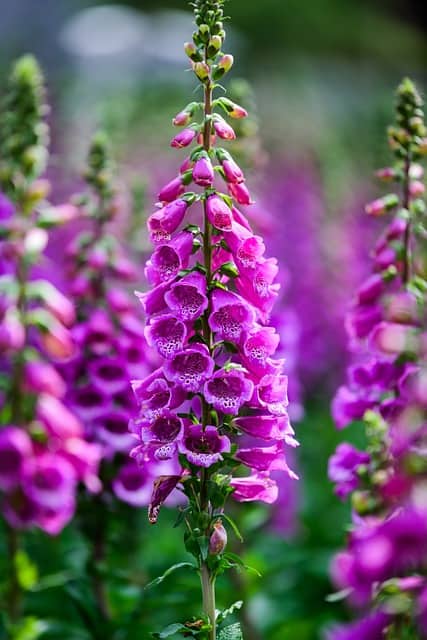
Foxglove flowers are tall and striking, representing ambition and inspiration. Their unique shape adds an artistic flair to floral arrangements, which can resonate deeply during worship services focused on motivation and personal growth. Arranging foxgloves in a way that draws the eye upward can symbolize the community’s aspirations to reach great spiritual heights together.
Integrating foxgloves into seasonal decorations can add to the artistic aesthetic of special events or community outreach programs, emphasizing creativity as a form of worship. Highlighting these flowers during planning meetings can also inspire groups to think creatively about their goals and missions.
Daisy

Daisies are the essence of summer—innocent, cheerful, and pure. Their simplicity makes them a staple choice for church floral arrangements, evoking feelings of joy and renewal. Educators and leaders within the church can use daisies symbolically in children’s ministry, teaching the significance of faith through childish delight and simplicity.
Daisies can be woven into wreaths for celebrations or used in smaller bouquets around the church to keep the atmosphere light and joyful during gatherings. Consider hosting a summer floral art event with the community, encouraging families to create daisy arrangements to celebrate hope and renewal.
Aster

With their charming star-like shape, asters embody love and wisdom, making them suitable for educational programs or summer discussions focused on spiritual growth. Their ability to bloom in various colors allows for versatile usage, and they can easily adapt to different settings—from the altar to fellowship tables.
Incorporate asters during youth-focused events or summer Bible studies to symbolize the growth of knowledge within the community. Ensuring that these flowers are part of summer decorations reminds everyone of the importance of wisdom, both in personal faith journeys and collective teachings.
Bougainvillea
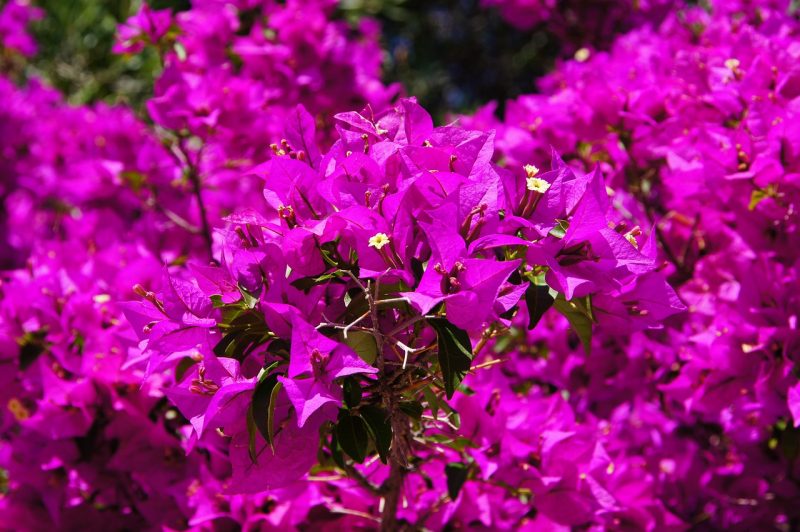
Bougainvillea is a stunning summer vine that produces vibrant clusters of flowers, representing passion and braveness. Their bright colors create a lively atmosphere that can elevate the overall ambience of the church, especially during festive or outdoor events. Bougainvillea can be used to adorn outdoor church events, tailgates, or during seasonal celebrations, enhancing the festive cheer.
This flower thrives in warmer climates, making it ideal for churches located in sunny regions. Encourage community members to help grow Bougainvillea plants around the church’s exterior, reinforcing the idea that beauty can flourish through collective care and effort.
Snapdragons
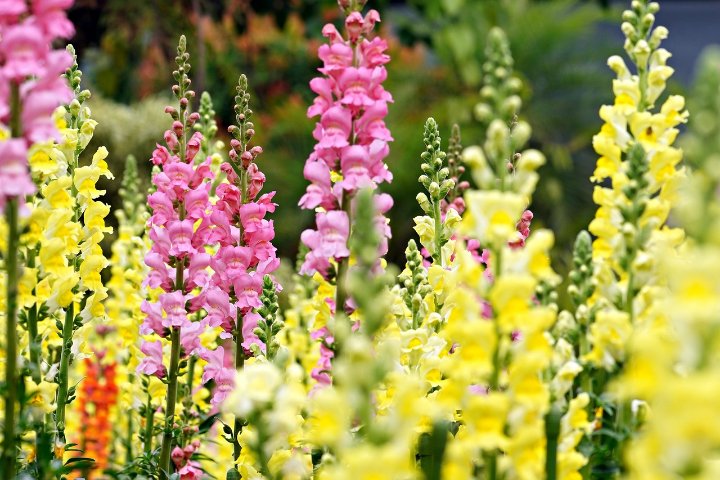
Snapdragons are recognized for their unique shape and come in a variety of vibrant colors, enhancing any floral arrangement. Representing grace and strength, the architecture of snapdragons can serve as metaphors during sermons focused on resilience and unity within a community.
Integrating snapdragons into arrangements for milestone events such as confirmations or church anniversaries can embody the strength of shared experiences through the years. Use them in arrangements that complement other flowers, fostering a sense of collaboration among the congregation in their shared faith journey.
Orchids
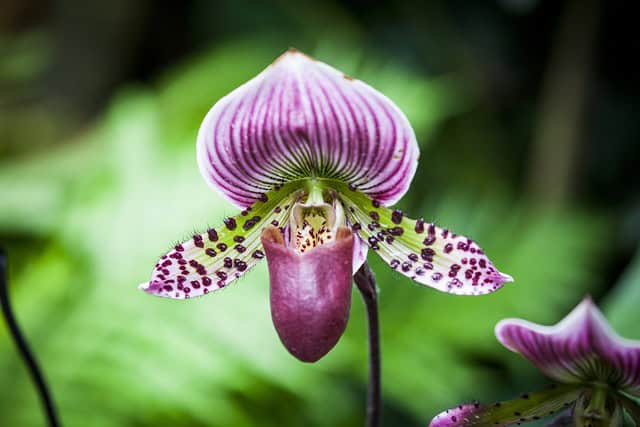
Orchids symbolize beauty, love, and strength, making them a profound choice for religious celebrations and ceremonies. Their exotic nature can evoke awe and reverence, ideal for highlighting the sacredness of prayer and devotion. Orchids can be beautifully arranged for wedding ceremonies held in the church or as part of altar decorations during significant holy days.
Consider using orchids in creative displays with candles or stone accents during contemplative services, inviting congregants to reflect on their faith journey in a visually and spiritually harmonious space. The rare beauty of orchids can inspire conversations about creation and the complexity of faith.
Clivia

Clivia blooms, known for their deep orange and yellow hues, symbolize determination and resilience, which align well with the narratives of many faith teachings. Their strong presence can provide a striking addition to indoor spaces, ideal for enhancing the church’s welcoming aspects. Given their low-maintenance requirements, these blooms can ensure that the church remains beautiful throughout the summer without requiring extensive upkeep.
Consider using clivia as part of yard sales or fundraising events that support local charities, reinforcing the message of working together to uplift the community. Highlighting these flowers can also spark conversations about the determination of faith and the community’s commitment to outreach and care.
Calla Lily
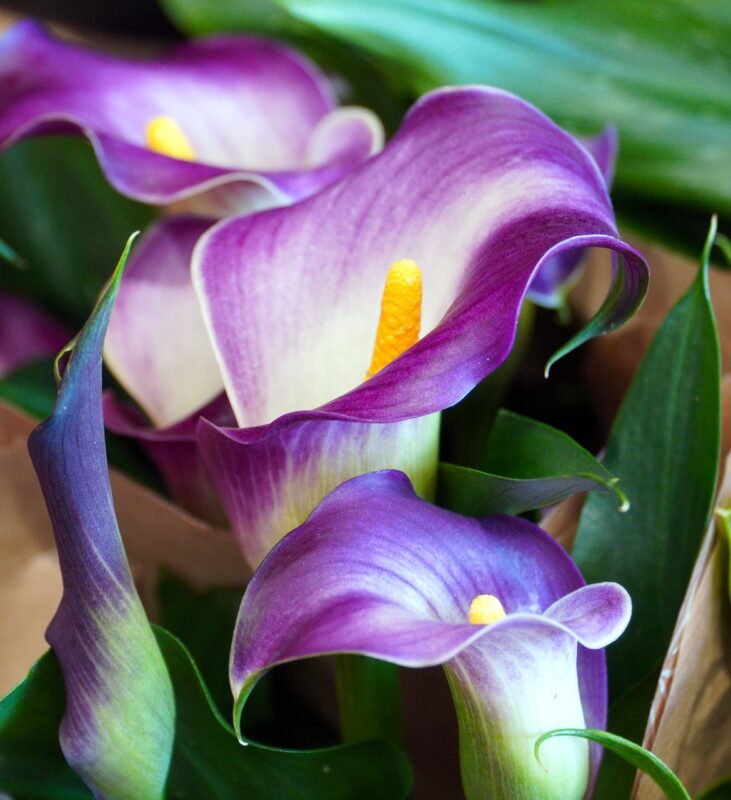
The elegance of calla lilies reflects purity and holiness, perfect for enhancing the beauty of special occasions, whether weddings or significant church celebrations. Their various colors add versatility to arrangements while maintaining a sophisticated touch. Calla lilies are often favored in more formal services, emphasizing dignity in worship.
Additionally, consider integrating calla lilies into personal prayer spaces within the church to symbolize important spiritual milestones or personal reflections. Arranging calla lilies with greenery can evoke a sense of tranquility, inviting congregants to pause and meditate during their visits to the church.
Dahlia
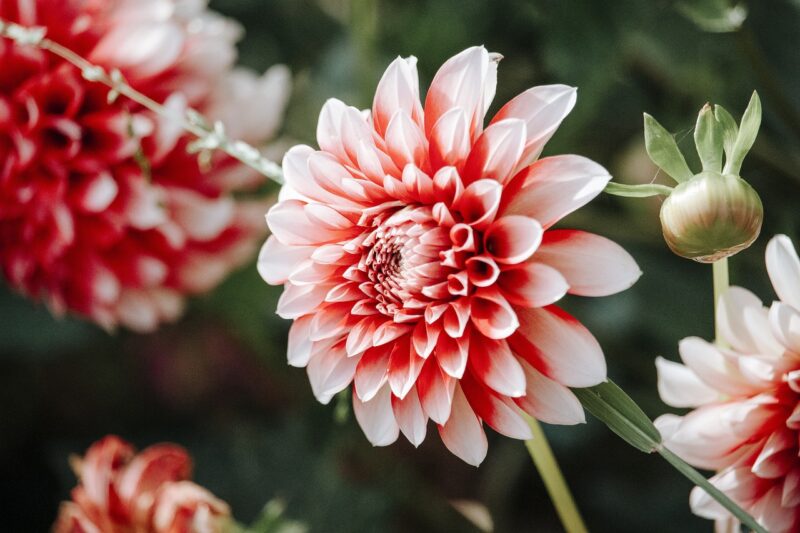
With their large and vibrant blooms, dahlias embody inner strength and balance, aligning perfectly with the theme of spiritual resilience and community unity. Dahlias flourish in summer and can be showcased in arrangements during church gatherings focused on community support and outreach.
Utilizing dahlias in arrangements can amplify the summer decor, adding warmth and abundance to visual displays. Pair them with smaller blooms to feature balance and harmony in community interactions, inviting congregants to celebrate their unique contributions to the church family.
Sweet Pea
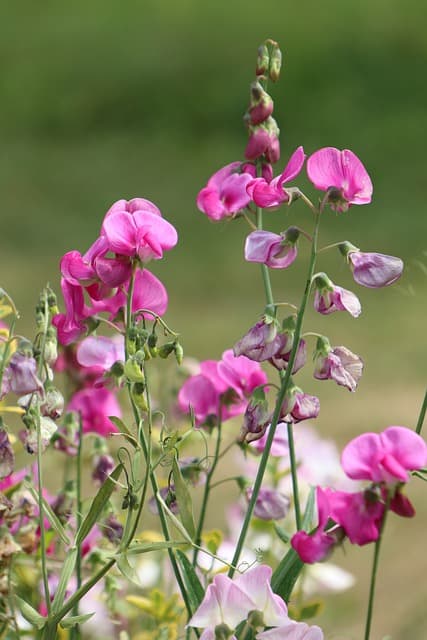
Sweet peas are delicate, fragrant blooms that symbolize pleasure and bliss, perfect for joyous occasions. These flowers can uplift the atmosphere during festive church gatherings, potlucks, or children’s ministry events. The soft colors and delightful fragrance of sweet peas can engage the senses, encouraging a feeling of joy and gratitude within the community.
Incorporating sweet peas into arrangements for family-focused summer services fosters connection and friendship among congregants. Hosting workshops focused on creating sweet pea arrangements can also be a lovely way to engage families during the summer while building bonds within the congregation.
Pansy
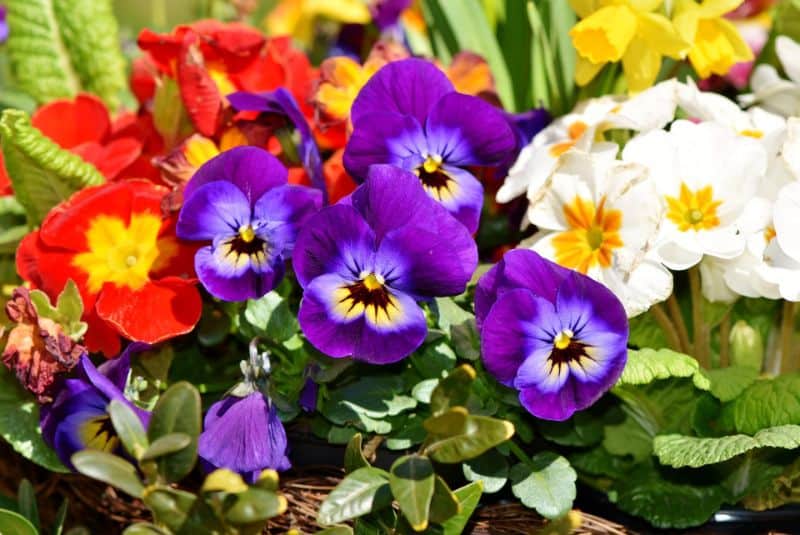
Pansies, with their vibrant expressions and heartwarming colors, have symbolic meanings tied to thoughtfulness and remembrance. The cheerful appearance of pansies can brighten up the church setting, serving as a comforting reminder of loved ones during memorial services or anniversaries.
Consider using pansies to create floral tributes or collaborative art projects with the congregation that celebrate the lives and contributions of community members. Arranging pansies around outdoor gathering areas resonates with sentiments of togetherness and reflection, enriching the collective spirit of the church.
Nasturtium
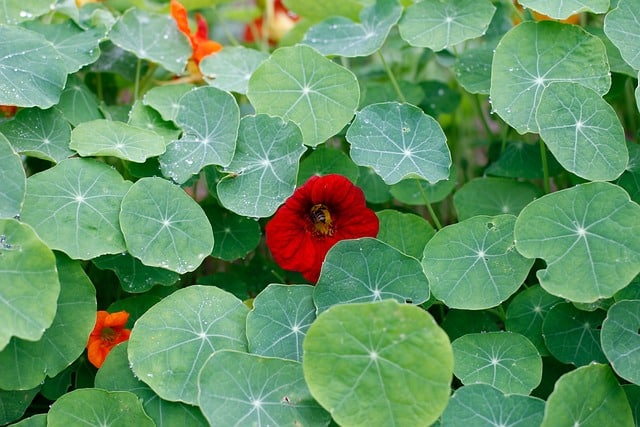
Nasturtiums are not only visually appealing with their bright orange and yellow colors but are also edible, offering a fun interaction for congregants during church gatherings. Symbolizing patriotism and victory, these flowers can serve as motifs for community unity and pride during outreach programs or festivals.
Nasturtiums can be incorporated into church harvest events or gardening clubs, inspiring members to create an active connection with the natural world. Educating congregants about culinary uses emphasizes the idea that beauty enhances experiences—not just visually, but also through sustenance and nourishment.
Bellflower
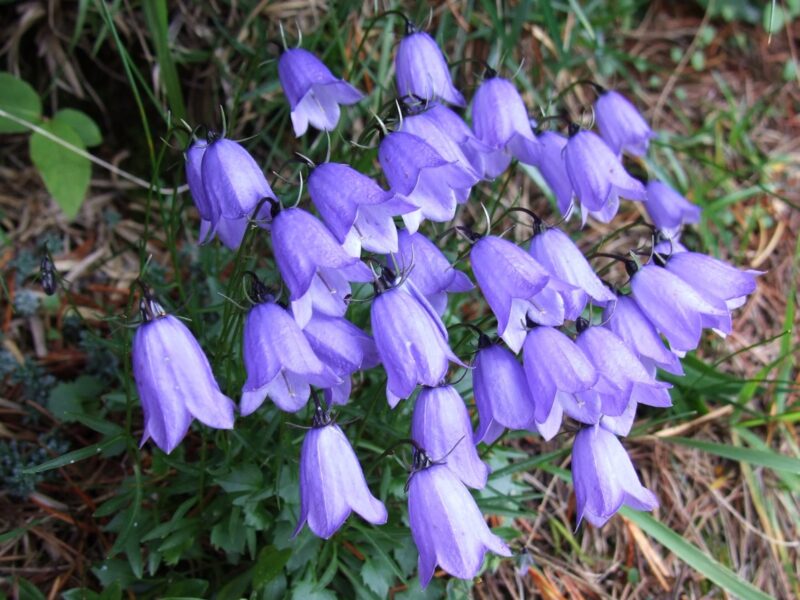
Bellflowers are charming with their lovely bell-shaped blooms, symbolizing gratitude and humility—perfect themes to highlight during church services that focus on thankfulness. Their delicate beauty can enhance floral displays in community gatherings, fostering a sense of appreciation for God’s blessings and communal support.
Using bellflowers in arrangements during intercessory prayer events or as decorations for gratitude-focused gatherings can inspire heartfelt reflection. Encouraging congregants to participate in flower-arranging workshops with bellflowers can instill a spirit of creativity and collective appreciation within the church community.
Chrysanthemum
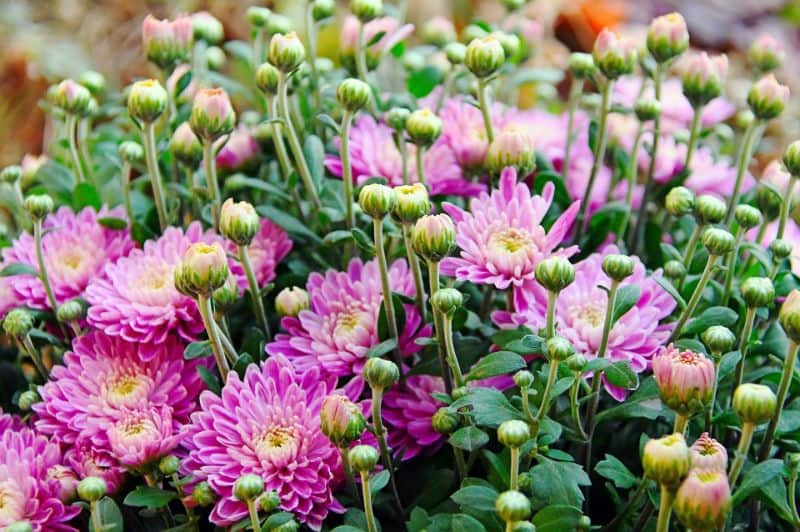
Chrysanthemums, often called mums, are hearty survivors of summer, symbolizing longevity and joy. These flowers present the perfect frame for uplifting community milestones, anniversaries, or outreach programs focused on celebrating the blessings of life together.
Using chrysanthemums in large arrangements or potted displays can add elegance to the church, visible from afar, guiding congregants into a welcoming space of worship. Celebrate church anniversaries by incorporating mums into significant decor, reinforcing the values of gratitude and shared experiences over the years.


